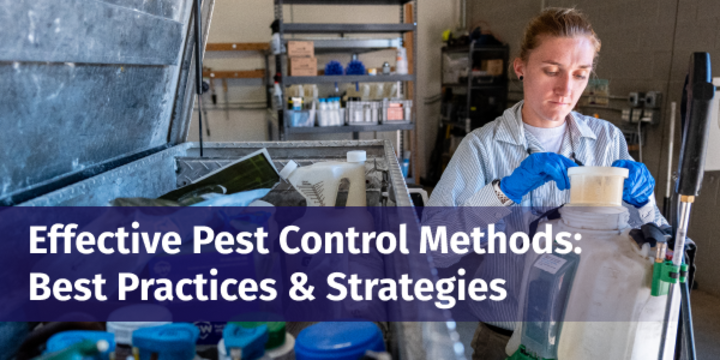Premier Pest Control Homestead Firms for Your Peace of Mind
Wiki Article
Discover the Tricks of Pest Control: How It Functions and Process Disclosed
Parasite control is a meticulous technique that entails a deep understanding of bug actions, calculated preparation, and accurate implementation. From determining the origin triggers of invasions to applying customized control steps, the procedure of pest control is a blend of scientific research and strategy intended at maintaining a harmonious atmosphere.Pest Habits Recognizing
Recognizing the complex behaviors of insects is crucial for effective insect control management. The behavior of roaches, such as their preference for humid and dark environments, overviews pest control professionals in figuring out where to focus therapy efforts.By staying abreast of the most current research on bug actions, bug control experts can constantly refine their techniques and remain ahead of progressing insect populations. Inevitably, a deep understanding of bug habits is a foundation of successful pest control monitoring.

Examination and Recognition Techniques
Efficient parasite control administration depends heavily on meticulous assessment and accurate identification techniques to precisely analyze infestations and create targeted obliteration techniques. Assessment includes a complete examination of the home to figure out the degree of the insect trouble, recognize the kind of bug existing, and locate prospective entrance points. This process might include visually checking usual hiding spots, making use of monitoring devices such as cams or catches, and analyzing pest droppings or damage signs.Recognition is an essential action that adheres to examination, as various parasites require specific treatment methods. Parasite control professionals use their competence and understanding of pest actions to determine the species existing precisely.
Pest Control Procedures Application
Having actually thoroughly examined and accurately identified the pests existing, the next important step is the implementation of targeted pest control measures to properly get rid of the invasion. When the type of insect has actually been established, customized approaches are used to resolve the particular threat. Typical parasite control techniques include chemical therapies, biological controls, and physical obstacles. Chemical therapies entail making use of chemicals to eliminate pests, while organic controls present all-natural predators to manage insect populaces. Physical obstacles such as securing access points or setting up traps are likewise reliable in avoiding bugs from entering or spreading within a residential property.Correct execution of parasite control steps calls for expertise to guarantee the security of citizens and the environment. By using targeted pest control procedures, problems can be efficiently eliminated, developing a much healthier and pest-free setting.
Environmental Effect Factors To Consider
When executing bug control procedures,Careful evaluation of the prospective environmental influence is an important element. Bug control approaches can have different results on the atmosphere, including non-target types being affected, contamination of dirt and water sources, and disturbance of the ecosystem. It is vital to consider these elements to reduce any negative effects on the setting.To alleviate ecological influences, integrated pest management (IPM) methods are usually suggested. IPM concentrates on making use of a mix of strategies such as biological control, habitat manipulation, and the targeted usage of chemicals as a last hope. Pest Control Homestead. By employing a holistic strategy, IPM intends to manage pests successfully click resources while decreasing damage to the environment

Recurring Tracking and Avoidance
Continuous tracking and avoidance play critical roles in preserving reliable bug control methods over time. When first pest control actions have been executed, recurring tracking comes to be necessary to track pest task levels and make certain that the chosen techniques are working properly. Regular examinations by trained professionals enable for the very early detection of any type of indications of parasite revival, making it possible for swift action to be taken before the problem rises.
Safety nets are just as vital in maintaining a pest-free setting. Implementing techniques such as sealing entry points, maintaining tidiness, appropriate waste monitoring, and minimizing resources of food and water deny parasites of the basics they require to thrive. By proactively resolving these variables, the likelihood of a bug problem is dramatically lowered.
Additionally, safety nets add to the long-lasting success click for source of parasite control initiatives, decreasing the demand for reactive treatments and linked costs. By integrating recurring monitoring and avoidance into a thorough parasite monitoring strategy, organizations and people can successfully safeguard their residential properties against unwanted intruders.
Verdict
Finally, pest control includes understanding insect behavior, performing comprehensive evaluations, executing control measures, considering ecological effects, and preserving continuous surveillance and prevention. By complying with these actions, parasite invasions can be efficiently handled and regulated. It is important to take a positive approach to pest control to secure both human wellness and the environment.By staying abreast of the most recent research on insect behavior, insect control specialists can continuously fine-tune their methods and remain in advance of evolving pest populations.Having diligently checked and accurately determined the parasites present, the following vital action is the application of targeted pest control measures to successfully get rid of the infestation.Moreover, picking environmentally friendly insect control items and methods can substantially reduce the environmental impact of bug monitoring methods - Pest Control Homestead. When first insect control actions have actually been executed, ongoing tracking ends up being necessary to track pest task levels and ensure that the chosen techniques are functioning properly.In conclusion, insect control includes understanding pest behavior, conducting complete evaluations, applying control Resources actions, taking into consideration ecological impacts, and maintaining ongoing monitoring and prevention
Report this wiki page